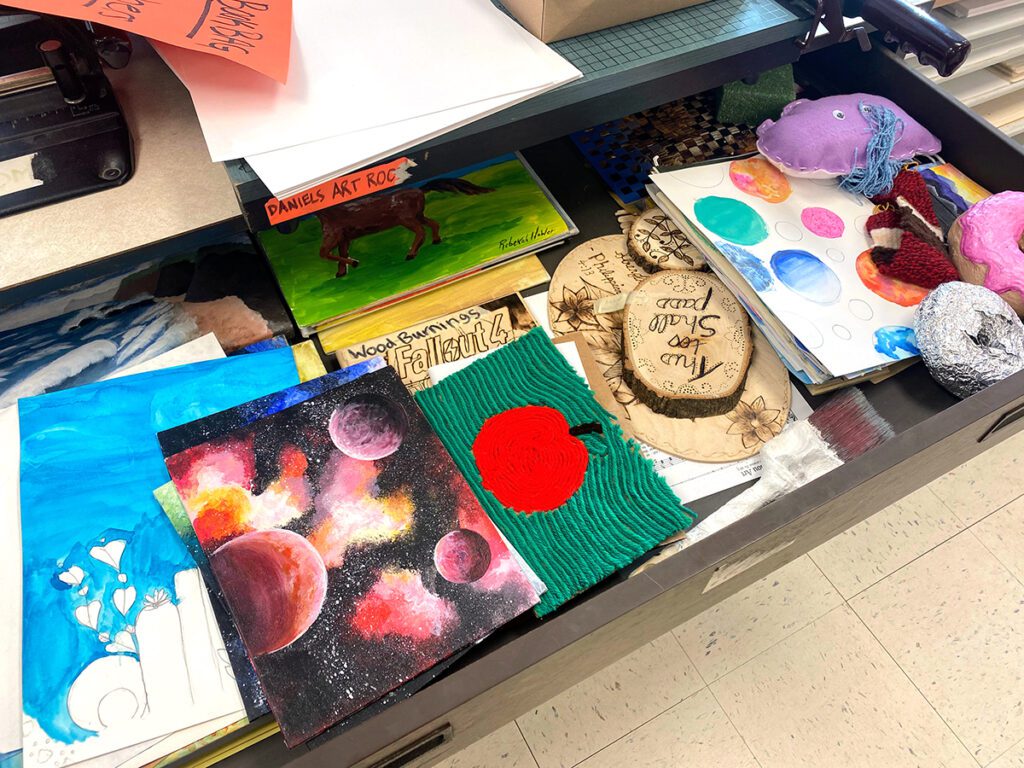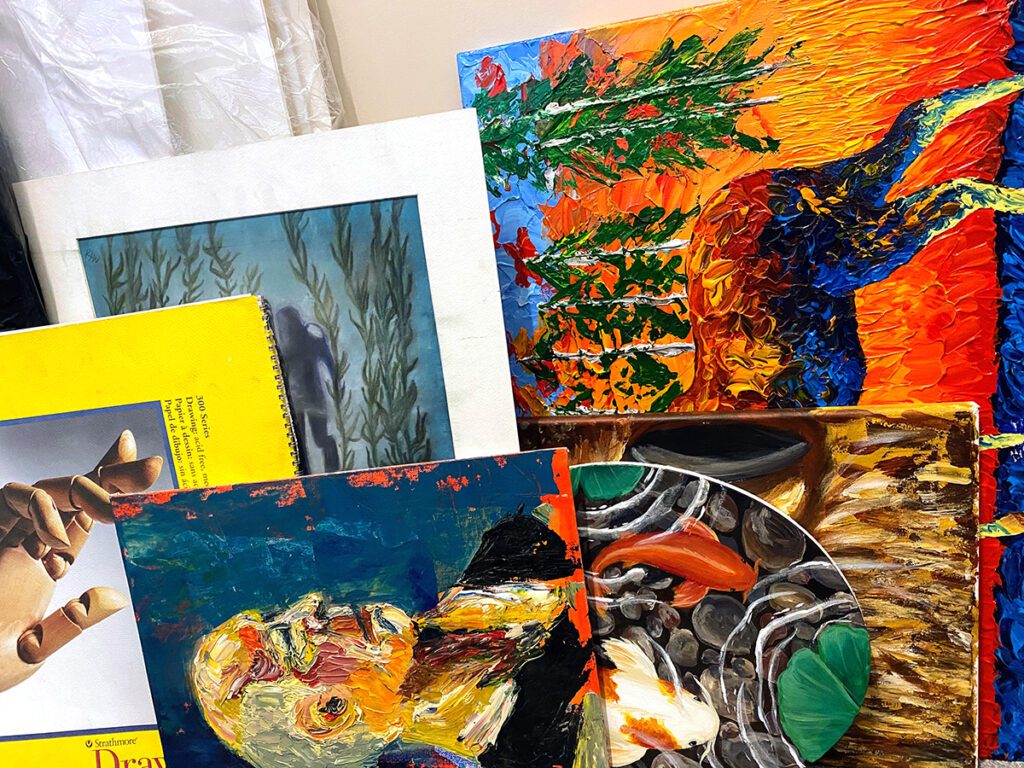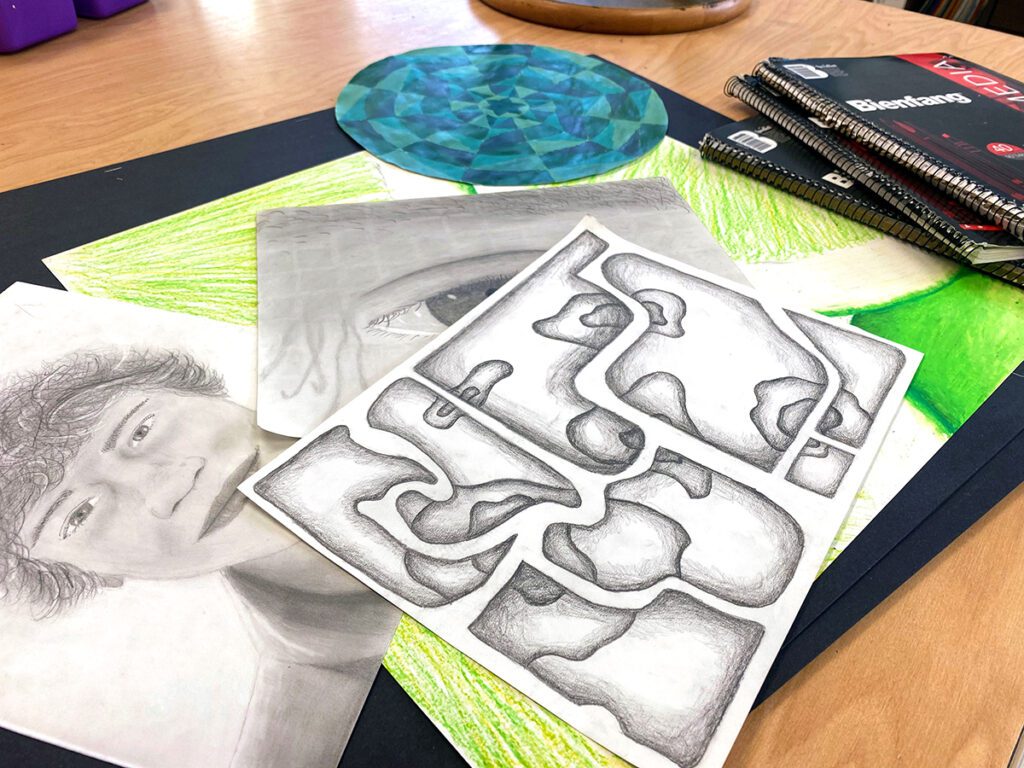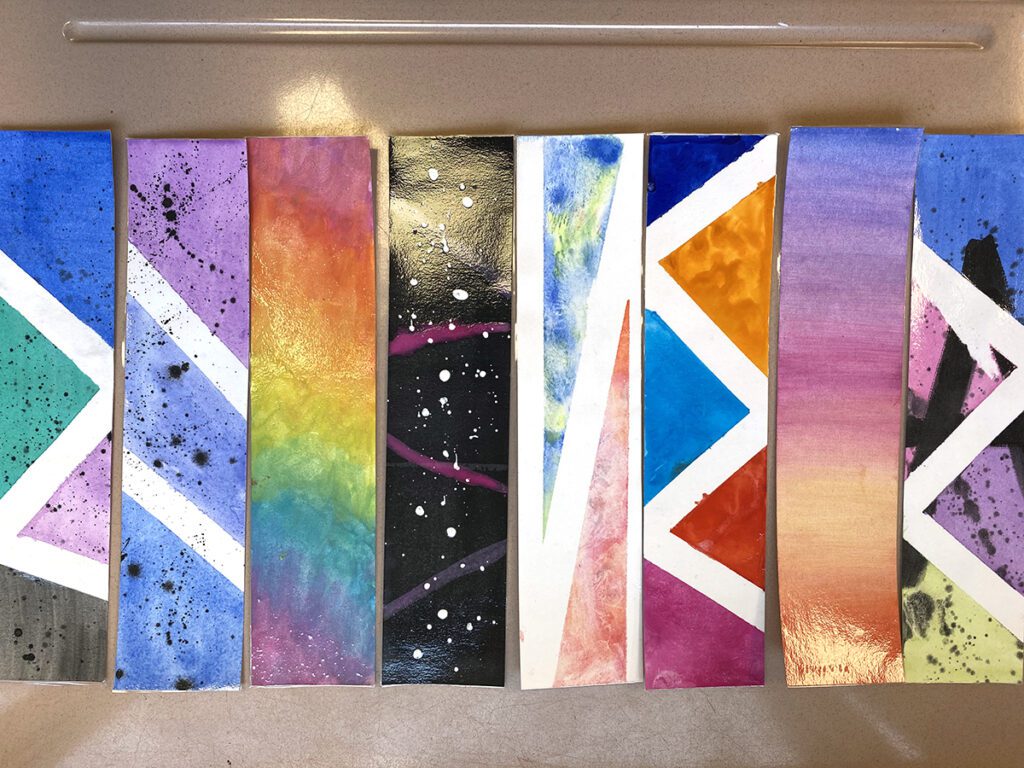Let’s face it—the end of the school year can be overwhelming. From grading final projects to cleaning up the classroom, it’s easy to feel buried under a sea of paint-splattered paper. Before you resign yourself to a summer of sorting piles of work and leftover examples, take a moment to consider the possibilities. These precious pieces of creativity are not just clutter but a treasure trove of artistic talent waiting for use. Whether you’re looking to beautify your community or inspire future artists, the options are numerous.
Keep reading for genius options to reimagine both teacher examples and leftover student art!

To keep or not to keep? What are the pros and cons?
Many art teachers are proud to be the hoarders of the school. We tend to collect random objects because we might use them in the future. Many of us tend to look at leftover work and agonize over keeping it or throwing it away. Let’s emphasize this first: do what is best for your situation. If there is not enough room, don’t feel pressured to keep artwork. Or, if you have lots of room, don’t feel pressured to throw things away because you see someone else filling the trash can at the end of the year.

Here are three reasons to keep artwork:
- Reduces waste.
Throwing away artwork contributes to unnecessary waste. Find new ways to use the artwork to promote sustainability. - Records student and teacher growth.
Save artwork over time to reflect on both your and your students’ progress. - Inspires and motivates in the future.
Repurpose artwork as a teaching tool or display it in galleries to motivate students to continue exploring their artistic abilities. Sharing samples can also save valuable planning time for other art teachers in your building or district.
Here are three reasons not to keep student artwork:
- Reclaims valuable space.
Create more space in your classroom for supplies and other materials. - Protects student information and privacy.
In some cases, artwork may contain personal information or sensitive material. It may be appropriate to dispose of the work. - Makes room for more relevant works.
Some artwork may become outdated or lose its relevance over time. Get rid of the artwork to make room for fresh projects and ideas.
Let’s look at 24 ways to reuse teacher examples and left-behind student art from this past year!
Once again, the main goal is to do what works best at your school, in your classroom, and with your students. We will share creative ways to use and repurpose artwork below, but don’t feel boxed in by these ideas! Experiment and tweak as you see fit.

- Decorate the school’s halls, classrooms, or library over the summer.
- Donate the artwork to local hospitals, nursing homes, or community centers to brighten up the walls.
- Hold an art sale or auction to raise funds for art supplies and equipment.
- Gift artwork to family members, friends, mentors, or favorite teachers.
- Store the artwork for future exhibitions or competitions.
- Use the artwork as a resource for future lessons or projects.
- Cut or tear the art to use in collages.
- Post a digital archive or presentation on the school’s website and social media accounts.
- Laminate the art for colorful and unique individual or whole table “messy mats.”
- Collaborate with local businesses to showcase students’ work in public spaces.
- Use the artwork as part of a traveling exhibit to share with other schools or community organizations.
- Create a scrapbook of the students’ work to commemorate the school year.
- Cut small strips out and laminate them to form custom bookmarks for your library.
- Compose a permanent installation or mural on school grounds.
- Organize a trade or exchange program with other art teachers to share ideas.
- Offer the artwork as prizes or incentives for art contests or challenges.
- Rip the art into pieces to use for colorful papier-mâché.
- Cut the art into strips to make paper weavings.
- Fold the pieces into cards, write encouraging notes in them, and drop them off at a local hospital or nursing home.
- Include the art in an online art course or tutorial.
- Roll the art into long “coils” and hot glue it onto a board to form a relief or wrap it to form a vessel.
- Tear the artwork into pieces by color and blend them into paper pulp to create new paper.
- Cut the artwork into long triangles and roll it into paper beads for jewelry making.
- Add photos of the work to your professional teaching portfolio.

The end of the school year is a time to reflect on the artistic accomplishments of your students. Their artwork is a unique representation of their creativity and dedication. While it can be tempting to throw or pack it all away, there are many rewarding ways to give old artwork a new purpose. For instance, brighten up a community space, inspire future artists, gift the artwork, or pass it along as a prize. Consider the ideas above for your leftover student art to maximize what you have. Who knows? You may just find a new way to continue the creative process even after the school year ends.
Do you toss or keep artwork at the end of the year?
How have you creatively reused leftover artwork at the end of the year?
Magazine articles and podcasts are opinions of professional education contributors and do not necessarily represent the position of the Art of Education University (AOEU) or its academic offerings. Contributors use terms in the way they are most often talked about in the scope of their educational experiences.





